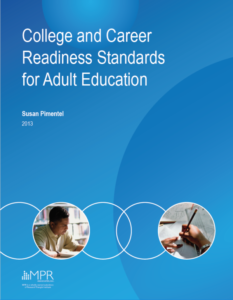Numeracy Resources
Teaching & Learning Math
Problem Strings
Problem Strings are an instructional strategy where the teacher facilitates students working through and thinking aloud about a set of math problems (for example: 5 x 6, then 5 x 60, and so on...) as a method for students to learn from each other about math strategies. The strategy offers a way to pack significant math learning into a short time in class.
5 Practices for Orchestrating Productive Mathematics Discussions
5 Practices for Orchestrating Mathematics Discussions describes how teachers can facilitate "mathematically productive discussions that are rooted in student thinking." In this posting, you can also find out about one teacher's experiences implementing the strategies in the book.
Balancing the Equation
In this 5-minute talk, Matt Larson addresses the historic pendulum swing in instructional practice, addresses recent concerns about national academic standards and "new math", and suggests what math educators might advocate for today.
Classroom Clock
In this 5-minute Ignite talk, Andrew Stadel addresses strategies for dealing with the limited time each teacher must face. How do we make best use of time in our classroom? How can we approach “squeezing great content into short segments”?
Ever Wonder What They’d Notice?
Asking the right questions and making space for student thinking can change outcomes for students. What can we do as teachers to faciliate their critical thinking and engagement? In this 5-minute Ignite talk, Annie Fetter addresses giving students space to notice and wonder.
Great Estimations by B. Goldstone
This picture book both describes estimation strategies and gives interesting, appealing images to practice on. An ABE teacher may scaffold the book by focusing an instructional activity around certain pages.
How to Edit Your Math Pessimism
Students and teacher often have beliefs are counter productive to learning. In this blog post, the author "edits" common statements about learning math that contribute to math anxiety, and re-frames them in ways that are encouraging and honest.
How to Learn Math
How to Learn Math is a free, self-paced class for learners of all levels of mathematics, facilitated by Dr. Jo Boaler. It combines information on the brain and learning with research on the best ways to approach and learn math effectively. It is open to anyone learning math, and is good for instructors as well as students.
Ignite Videos – Math Forum
Ignite is a presentation format where each presenter speaks for 5 minutes. This site has some excellent talks from the Math Forum at Drexel.
Math Instructional Routines for Adult Learners
From the Adult Numeracy Network, these Instructional Routines are accessible and challenging to all students, can be approached in multiple ways using different types of sense-making strategies, promote understanding through discussion, make student thinking visible, make math visual and encourage practice of mental math.
Purposeful Numberless Word Problems
In these blog posts, Brian Bushart addresses types of word problems and a strategy for instruction.
Rethinking How We See Mistakes
Math teacher Audrey McLaren writes about encouraging students to make and learn from mistakes. She recommends specific strategies for changing a classroom's culture around mistakes.
Students with Disabilities Can Do Math
Articles, slides, detailed resources and a record of Twitter discussion around this important topic.
The Best Way to Learn Math is to Learn to Fail Productively
Manu Kapur's research finds that students are more successful when teachers allow them to have a period of (teacher-planned) productive struggle with material before the teacher provides direct instruction on the math strategies.
The Comedic Beauty of Mathematics
In this 5-minute video, Laila Nur makes the case for using humor to build students' relationship with math.
Thinking Routines
A variety of instructional strategies that can be used with various levels of math instruction. Prepared by Minnesota teacher Joe Cole.
Tweet Me, Maybe
Max Ray-Reik of the Math Forum suggests using Twitter for personalized professional development in this 5-minute talk.
Why Before How
Teachers can use this book to build the concept of place value, encourage students to consider multiple methods for solving problems, and build real understanding of the meaning behind addition, subtraction, multiplication, and division paving the way to beginning algebra.
Youcubed.org
Description: “Our main goal is to inspire, educate and empower teachers of mathematics, transforming the latest research on math learning into accessible and practical forms.” Find instructional, ready-to-use materials at different levels; tasks are searchable by math topic, grade and mathematical practice.
College & Career Readiness (CCR) Math Standards
 Looking for more specific information about the College & Career Readiness (CCR) Math Standards? Check out the CCRS Math Resources section of the CCR Standards resource library!
Looking for more specific information about the College & Career Readiness (CCR) Math Standards? Check out the CCRS Math Resources section of the CCR Standards resource library!